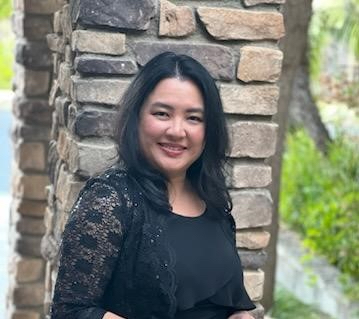“Conclave’s” Oscar-Nominated Costume Designer Lisy Christl on the Fashion of Faith
Following his Oscar-winning WWI epic, All Quiet on the Western Front, Edward Berger’s latest, Conclave, focuses on a different kind of battle, dropping us into the Vatican in his twisty ecclesiastical thriller. After the death of the current Pontiff, the honorable and evenhanded Cardinal Lawrence (Ralph Fiennes) is charged with convening one of the most secretive rituals in the world, the conclave, where over 100 cardinals from around the world are sequestered until they decide who amongst them will be the next leader of the Catholic Church. The gathering soon derails into a brutal squirmish of succession between the liberal camp, led by Cardinal Bellini (Stanley Tucci), against hardline conservatives such as Cardinal Tedesco of Venice (Sergio Castellitto).
The film has been nominated for eight Academy Awards, including Best Picture, writing, Production Design, and a second Oscar nod for German costume designer Lisy Christl. After almost a year of developing ideas with Berger, Christl led a crew of Italian, German, Greek, and Austrian artisans working in three workshops over five months to bring Berger’s vision to life. Juxtaposing the opulence of the parade of rituals against the Cardinals’ Spartan day-to-day life in the dormitories at Casa Santa Maria, her team designed and made every item of clothing seen on the screen, all the way down to the men’s belts, crosses, rings, shoes, and hats.
We recently talked to Christl about how the rings and crosses reveal each man’s character and political leanings and how one artisan found her when they were looking for a company to produce all the clergie’s hats and headgear for the film.
First of all, I was thrilled to see that you worked on one of my favorite action comedies, Roland Emmerich’s White House Down! It’s one of those fun movies that I can watch over and over again.
Oh wow! This is wonderful. I loved working on it.
Can you talk about the shorthand that you have developed with Edward after working on four projects with him? What qualities of his filmmaking style make it easier for you to do your job?
Edward is an extremely reliable man—one answer, one question. He’s always there for you. He’s hard-working, extremely smart, and nice.
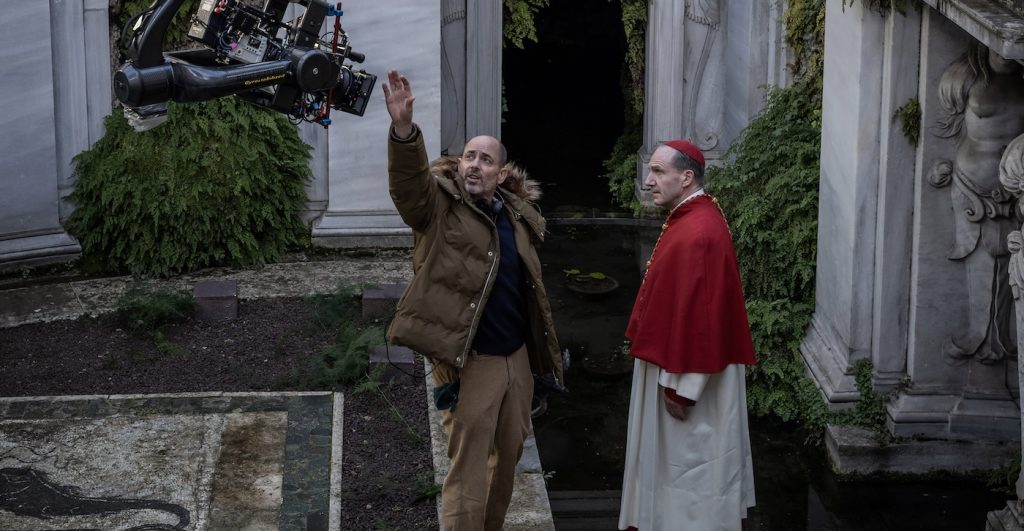
I’ve recently interviewed Conclave’s editor, Nick Emerson [who is also nominated for the film], and he talked about how Edward is very detailed with shot lists and storyboards, especially for the voting scenes. How did those help your process?
This is how he works. He knows his script very well. For every scene, you have a storyboard, so he knows what he needs during the shoot. He knows what he’s doing and what he wants.
What was your research process for this film?
I read a lot and had a ton of questions because I just had no clue about the procedure [of the conclave] when we first started. After many months of research, I talked to [liturgical consultant] Francesco Bonomo to clarify what we could do. In 1962, the Catholic Church changed many of the rules [referring to the Second Vatican Council]. So, Francesco clarified how much freedom we had within these rules to still deliver what we wanted for the film. He also advised Edward, Ralph, and all of us.
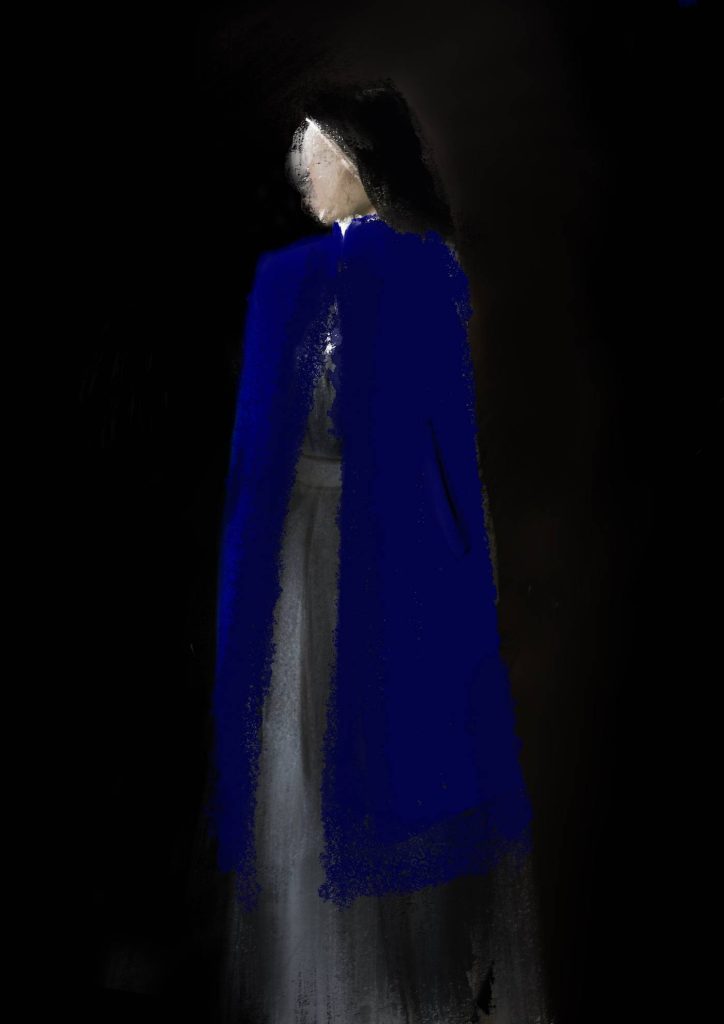
What were some of the things that you learned from your research and discussions with other experts?
As you know, the Catholic Church is a very old institution. The last conclave was held in 2013 and there is a ton of material available on that. The more I studied that conclave and its history, I had questions about the changes in color and fabric throughout history. Before synthetics were available, you had wool and linen, and later on, cotton, but there was no polyester. After the Industrial Revolution, things got cheaper and more affordable. It’s also very important to understand that not every Cardinal comes from a rich diocese. So, all these factors went into their attire and the changes made over time.
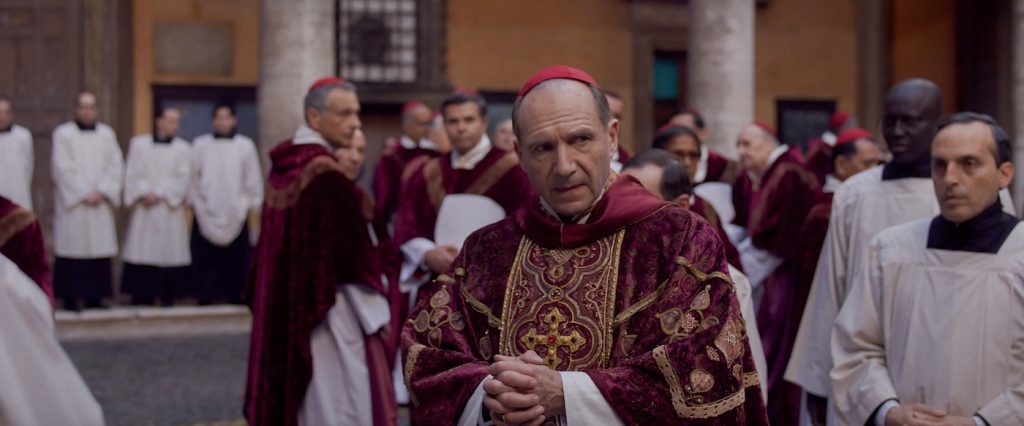
How did this knowledge inform your decision to change the fabric, colors, and style?
Cristóbal Balenciaga was a very faithful Catholic, and his designs were inspired by the Catholic Church. When I saw a Balenciaga couture show in 2022, at first, I wanted to send that to Edward but I thought it might be a bit too much. But a few days later, he sent me a video about the same show! We both had the same idea, especially trying to do something different than today’s look.
In the film, the Cardinals’ cassocks and vestments are a deeper red and made of heavier wool compared to what they wear now in real life. What went into that design decision?
We did not like the look of the current wardrobe, so we modified it to make it look simplified, cleaner, and minimalistic. There are clergies in Rome now who wear something different in the winter or use a different material, so there isn’t only one look for everyone. For the film, we wanted a very clean look for all of our Cardinals.
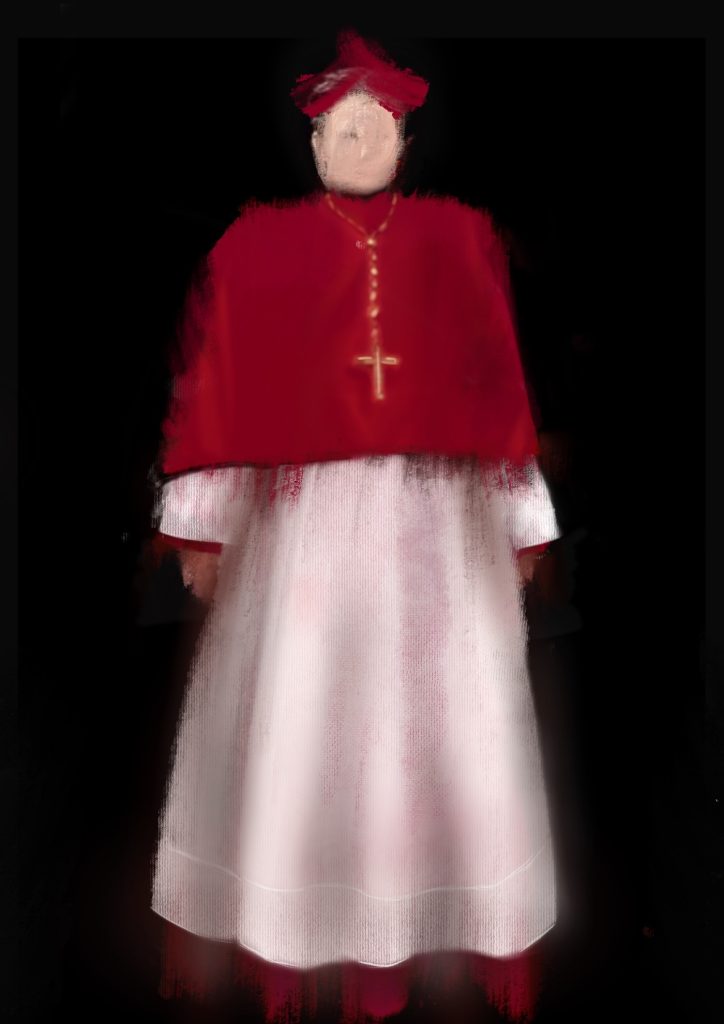
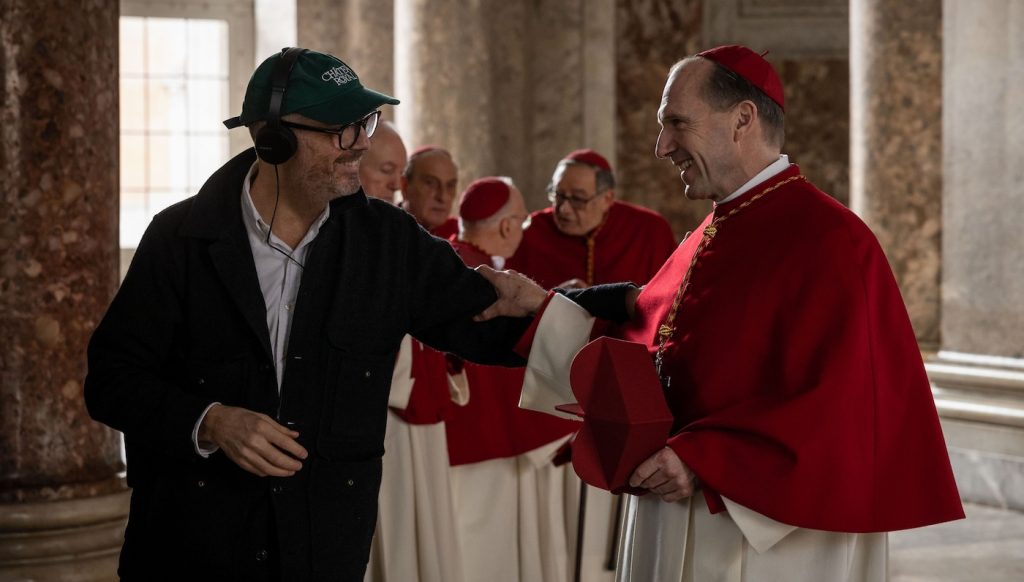
Were the costumes made from scratch or altered and rented?
We made everything from scratch. There’s nothing bought or rented. Since we changed the color [of the robes], we couldn’t buy anything.
How big was your team, including the cutters, fitters, seamstress, etc.?
We had our in-house workshop in Rome and the Cinecittà Studios, as well as two external workshops in Rome and Florence. We had 20-25 people in-house, including two cutters and three or four seamstresses. The other workshops were about the same size. The fabric is woven and dyed in factories in an Italian town called Prato. We had around 3,500 yards of fabric, so it wasn’t something we could do in-house. We made all the crosses, hats, and belts too.
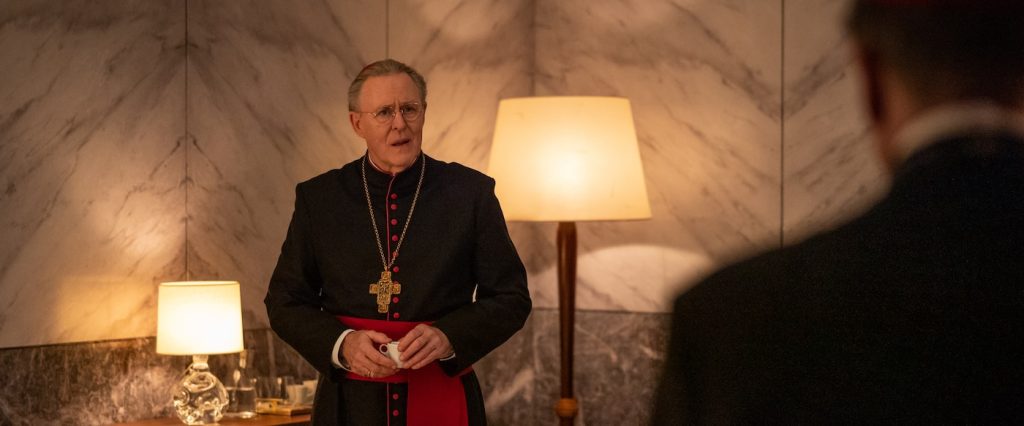
Let’s talk about those crosses and the rings that each Cardinal wears.
These Cardinals can read each other when they see what kind of cross a man wears. This is based on research, not something we invented for the movie. Our Italian supervisor found this beautiful family-run goldsmith in Florence, Riccardo Penko, who made all the crosses and rings after I described the political orientation of each cardinal. Over generations, their clients have included the Archdiocese of Florence, Prato, or Venice, and the Vatican, so this is their life; they know each symbol used in the designs. As a designer, you don’t have years to prepare for a movie, and these goldsmiths have the knowledge of generations. So, I learned a lot from them.
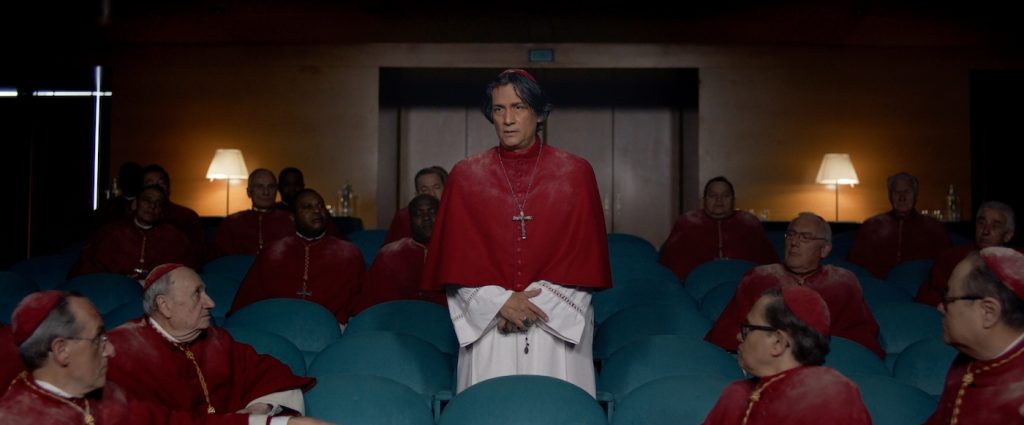
From afar, the Cardinals’ wardrobe may look similar. How did you differentiate the looks of each man, say Lawrence versus Bellini or Tedesco?
The deeper you go into a character, the better you know how and what he should wear. Look at Tedesco, who is a very provocative character—he wants the Church to go back to the old days when everything was in Latin and is posturing all the time. All this gives you a way more dramatic character, so he has that big cape. But Lawrence is a humble and liberal man with a lot of doubts [about his faith and the Church]. For example, in the opening scene, Tedesco comes in with his big red cape and a very rich golden cross, while Lawrence is there with a very simple black overcoat and a silver cross.
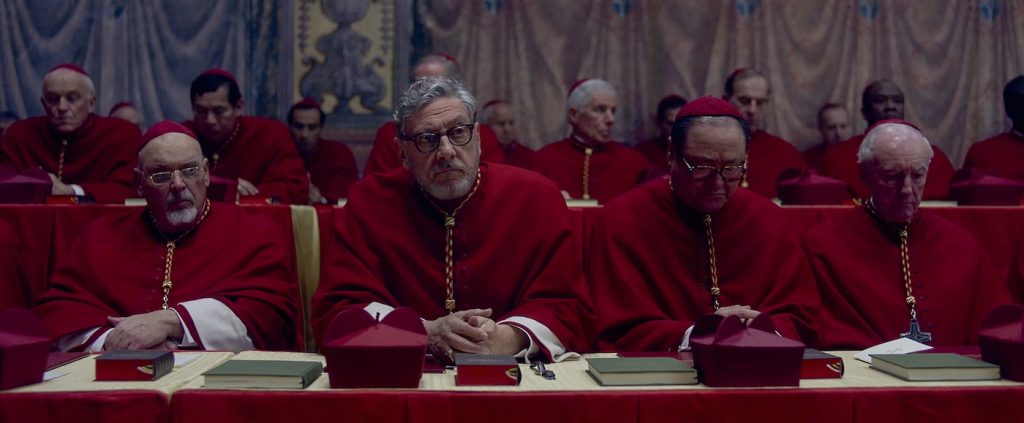
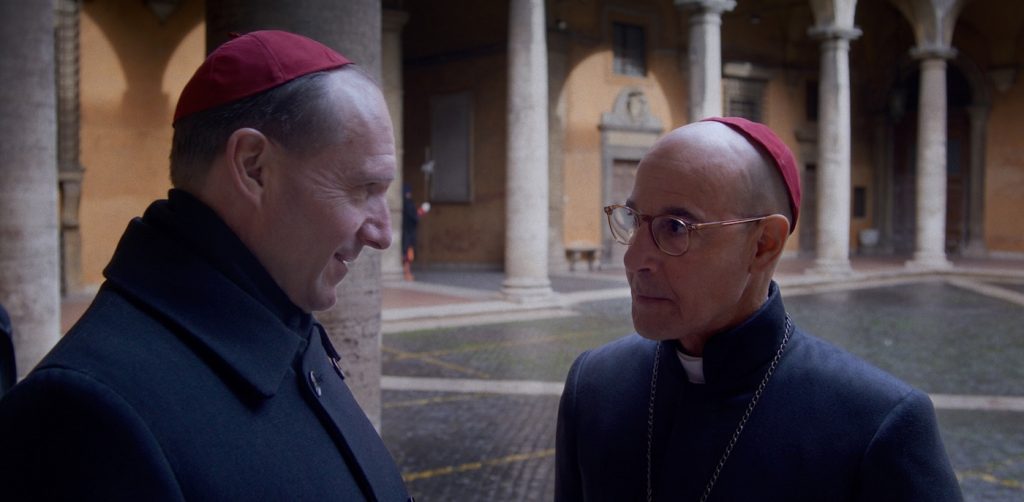
How were the assorted hats and headgear made?
An artisan, Gino Giovannetti, in Rome basically makes all the clergy hats in Europe, and he actually found me after we had gone to ask for budgets and quotes at various shops. His is another family enterprise where the whole family is in the business. So, they made all the miters, birettas, and skull caps.
Do you have a favorite sequence or scene in the movie? Mine is Cardinal Lawrence’s homily about faith versus doubt on the first day of the conclave.
Yeah, that is a wonderful scene. And then you cut outside and see Isabella Rossellini (who plays Sister Agnes, the nun in charge of running the Casa Santa Maria) how she sits there and just listens to him. I love that scene very much.
Conclave is available on Peacock and PVOD now.
Featured image: (L to R) Brían F. O’Byrne as Cardinal O’Malley and Ralph Fiennes as Cardinal Lawrence in director Edward Berger’s CONCLAVE, a Focus Features release. Credit: Courtesy of Focus Features. © 2024 All Rights Reserved.


